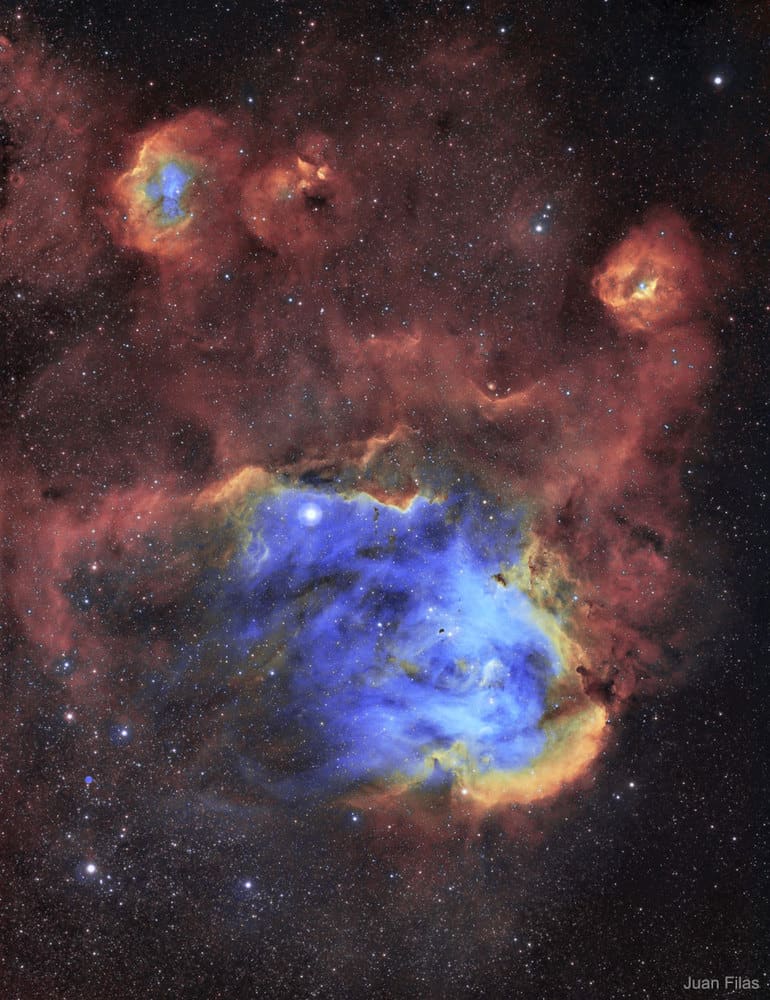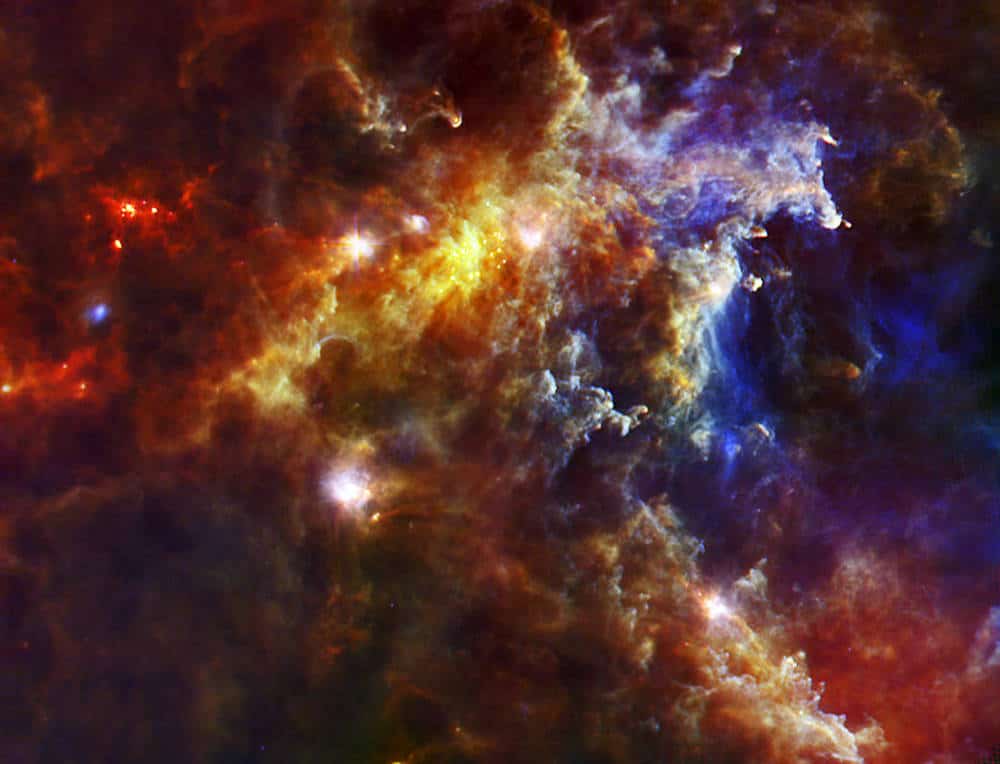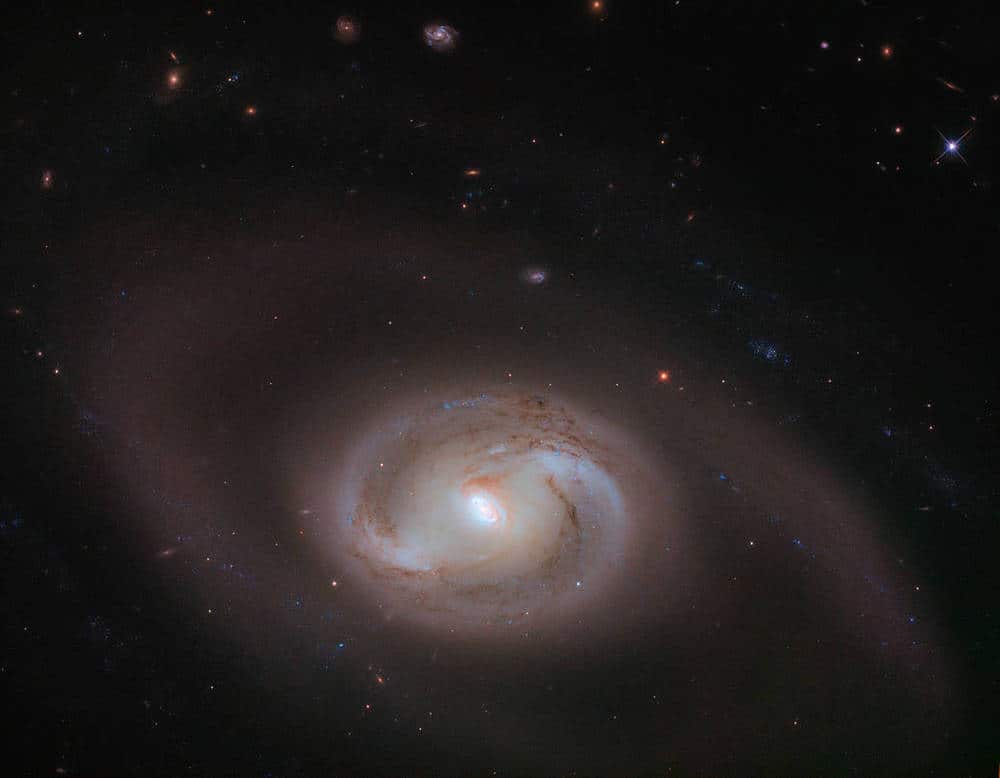Blog
Cataloged as IC 2944, the Running Chicken Nebula spans about 100 light years and lies about 6,000 light years away toward the constellation of the Centaur (Centaurus). The featured image, shown in scientifically assigned colors, was captured recently in a 12-hour exposure. The star cluster Collinder 249 is visible embedded in the nebula’s glowing gas. Although difficult to discern here, several dark molecular clouds with distinct shapes can be found inside the nebula.

Stephen Robert Nesta “Raggamuffin” Marley (born April 20, 1972) is a Jamaican-American musician who is the son of Bob Marley and his wife Rita Marley. Stephen is an eight-time Grammy Award winner, three times as a solo artist, twice as a producer of younger brother Damian Marley‘s Halfway Tree and Welcome to Jamrock albums, and a further three times as a member of his older brother Ziggy Marley‘s group Ziggy Marley & The Melody Makers.
Stephen’s 2011 album Revelation Pt. 1 – The Root of Life won the Grammy Award for Best Reggae Album in 2012. His follow-up, Revelation Pt. 2 – The Fruit of Life, was released on July 22, 2016.
In several of his self-produced solo albums Mind Control (2007), Mind Control Acoustic (2008), Revelation Part I: The Root of Life (2011) and Revelation Part II: The Fruit of Life (2016) he has composed and produced all the songs on his album, and he has played a variety of the musical instruments himself.
On April 3, 2017, Stephen and Pitbull performed at The Tonight Show Starring Jimmy Fallon on the main stage, playing their single, “Options”. Stephen was born in Wilmington, Delaware, and raised in Kingston, Jamaica.
more...Joe Bonner (April 20, 1948 – November 20, 2014) was a hard bop and modal jazz pianist, influenced by McCoy Tyner and Art Tatum. He was born in Rocky Mount, North Carolina and studied at Virginia State College, but indicated that he learned more about music from musicians he worked with. In the seventies he played with Roy Haynes, Freddie Hubbard, Woody Shaw and Billy Harper, among others.
more...Ernesto Antonio “Tito” Puente (April 20, 1923 – May 31, 2000) was an American musician, songwriter and record producer. The son of Ernest and Felicia Puente, native Puerto Ricans living in New York City’s Spanish Harlem, Puente is often credited as “The Musical Pope”, “El Rey de los Timbales” (The King of the Timbales) and “The King of Latin Music”. He is best known for dance-oriented mambo and Latin jazz compositions that endured over a 50-year career. He and his music appear in many films such as The Mambo Kings and Fernando Trueba‘s Calle 54. He guest-starred on several television shows, including Sesame Street and The Simpsons two-part episode “Who Shot Mr. Burns?“. His most famous song is “Oye Como Va“.
Tito Puente was born on April 20, 1923, at Harlem Hospital Center in the New York borough of Manhattan. His family moved frequently, but he spent the majority of his childhood in the Spanish Harlem area of the city. Puente’s father was the foreman at a razorblade factory.
more...Lionel Leo Hampton (April 20, 1908 – August 31, 2002) was an American jazz vibraphonist, pianist, percussionist, and bandleader. Hampton worked with jazz musicians from Teddy Wilson, Benny Goodman, and Buddy Rich to Charlie Parker, Charles Mingus, and Quincy Jones. In 1992, he was inducted into the Alabama Jazz Hall of Fame, and was awarded the National Medal of Arts in 1996.
Lionel Hampton was born in 1908 in Louisville, Kentucky, and was raised by his mother. Shortly after he was born, he and his mother moved to her hometown of Birmingham, Alabama. He spent his early childhood in Kenosha, Wisconsin, before he and his family moved to Chicago, Illinois, in 1916. As a youth, Hampton was a member of the Bud Billiken Club, an alternative to the Boy Scouts of America, which was off-limits because of racial segregation. During the 1920s, while still a teenager, Hampton took xylophone lessons from Jimmy Bertrand and began to play drums. Hampton was raised Roman Catholic, and started out playing fife and drum at the Holy Rosary Academy near Chicago.
https://www.youtube.com/watch?v=KHZC6CLgnPc
more...This 2010 image from the Herschel Space Observatory shows dust clouds associated with the Rosette Nebula, a stellar nursery about 5,000 light-years from Earth in the Monoceros, or Unicorn, constellation. Herschel collected the infrared light given out by dust. The bright smudges are dusty cocoons containing massive embryonic stars, which will grow up to 10 times the mass of our Sun. The small spots near the center of the image are lower mass stellar embryos. The nebula itself is located to the right of the picture, along with its massive cluster of stars.

Richard Cully was born on April 19th, 1949 in Manhattan, New York. He began his musical career at the age of 16 studying with James Rago, Julliard graduate in percussion, presently the timpanist with the Louisville Symphony Orchestra and Professor of Percussion at the University of Louisville. While still in high school, he formed a very popular quartet, (The Charades). He attended the prestigious Berklee College of Music in Boston, studying with Alan Dawson and continued his studies with former ìTonight Showî drummer Ed Shaughnessy. His early career included performing a variety of musical styles: pop, rock, disco, jazz and country. In 1982, he formed the DICK CULLY BIG BAND, a high energy, exciting unit performing a wide variety of arrangements for all age groups. In 1984, he became an artist/endorser for the world famous Slingerland Drum Company and was recognized as a ìWorld Class Drummerî by the Pro-Mark Corporation of Houston, Texas, the worldís largest manufacturer of drumsticks.
He has worked with numerous celebrities including: Toni Tennille, Sandy Duncan, Florence Henderson, Frank Gorshin, Ray Anthony, Buddy Morrow, Skitch Henderson, Patti Page, Nanette Fabray, band leader Les Elgart, noted big band singer Connie Haines, pop star Bobby Rydell, TV personality Dennis James and comedians Foster Brooks and George Kirby. In 1989, the Dick Cully Big Band was chosen as ìOne of the best bands in the nationî by Down Beat magazine, the undisputed musical authority, and has been featured numerous times on the Black Entertainment Networkís ìJazz Discoveryî television program.
more...Dudley Stuart John Moore, CBE (19 April 1935 – 27 March 2002) was an English actor, comedian, musician and composer. Moore first came to prominence in the UK as a leading figure in the British satire boom of the 1960s. He was one of the four writer-performers in the comedy revue Beyond the Fringe from 1960 that created a boom in satirical comedy, and with one member of that team, Peter Cook, collaborated on the BBC television series Not Only… But Also. The double act worked on other projects until the mid-1970s, by which time Moore had settled in Los Angeles to concentrate on his film acting.
His solo career as a comedy film actor was heightened by the success of hit Hollywood films, particularly Foul Play (1978), 10 (1979) and Arthur(1981). For Arthur, Moore was nominated for the Academy Award for Best Actor and won a Golden Globe Award. He received a second Golden Globe for his performance in Micki & Maude (1984).
more...George Bernard “Bernie” Worrell, Jr. (April 19, 1944 – June 24, 2016)was an American keyboardist and composer best known as a founding member of Parliament-Funkadelic and for his work with Talking Heads. He is a member of the Rock and Roll Hall of Fame, inducted in 1997 with fifteen other members of Parliament-Funkadelic. Worrell was described by Jon Pareles of The New York Times as “the kind of sideman who is as influential as some bandleaders.”
Worrell was born in Long Branch, New Jersey, and grew up in Plainfield, New Jersey, where his family moved when he was eight. A musical prodigy, he began formal piano lessons by age three and wrote a concerto at age eight. He went on to study at the Juilliard School and received a degree from the New England Conservatory of Music in 1967. As a college student, Worrell played with a group called Chubby & The Turnpikes; this ensemble eventually evolved into Tavares.
https://www.youtube.com/watch?v=cioSHD9EbEQ
more...Alexis Andrew Nicholas Koerner (19 April 1928 – 1 January 1984), known professionally as Alexis Korner, was a British blues musician and radio broadcaster, who has sometimes been referred to as “a founding father of British blues“. A major influence on the sound of the British music scene in the 1960s, Korner was instrumental in the formation of several notable British bands including The Rolling Stones and Free.
Korner was born in Paris, France, to an Austrian Jewish father and a Greek mother. He spent his childhood in France, Switzerland and North Africa and arrived in London in 1940 at the start of World War II. One memory of his youth was listening to a record by black pianist Jimmy Yanceyduring a German air raid. Korner said, “From then on all I wanted to do was play the blues.”
After the war, Korner played piano and guitar (his first guitar was built by friend and author Sydney Hopkins, who wrote Mister God, This Is Anna) and in 1949 joined Chris Barber‘s Jazz Band where he met blues harmonica player Cyril Davies. They started playing together as a duo, started the influential London Blues and Barrelhouse Club in 1955 and made their first record together in 1957.Korner made his first official record on Decca Records DFE 6286 in the company of Ken Colyer‘s Skiffle Group. His talent extended to playing mandolin on one of the tracks of this rare British EP, recorded in London on 28 July 1955. Korner encouraged many American blues artists, previously virtually unknown in Britain, to perform at the London Blues and Barrelhouse Club, which he established with Davies at the Round House pub in Soho.
more...At first glance, the subject of this NASA/ESA Hubble Space Telescope image looks to be a simple spiral galaxy, with two pinwheeling arms emerging from a central bar of stars and material that cuts through the galactic center. In fact, there are rings within these spiral arms, too: spirals within a spiral.
This kind of morphology is known as a multiring structure. As this description suggests, this galaxy, named NGC 2273, hosts an inner ring and two outer “pseudorings.” Having so many distinct rings is rare and makes NGC 2273 unusual. Rings are created when a galaxy’s spiral arms appear to loop around to nearly close upon one another, combined with a trick of cosmic perspective. NGC 2273’s two pseudorings are formed by two swirling sets of spiral arms coming together, and the inner ring by two arcing structures nearer to the galactic center, which seem to connect in a similar way.
These rings are not the only interesting feature of this galaxy. NGC 2273 is also a Seyfert galaxy, a galaxy with an extremely luminous core. In fact, the center of a galaxy such as this is powered by a supermassive black hole, and can glow brightly enough to outshine an entire galaxy like the Milky Way.

Daniel Richard Gottlieb (born April 18, 1953) is an American drummer. He was a founding member of the Pat Metheny Group, and was co-founder of Elements with Mark Egan. Gottlieb was born in New York City on April 18, 1953. He took lessons from Mel Lewis and Joe Morello and graduated from the University of Miamiin 1975. Morello was his lifelong teacher, beginning in 1968 and through the late 1990s. He became a member of the Gary Burton Quartet in 1976 with Pat Metheny. He was one of the original members of The Pat Metheny Group from 1977 to 1983.Bassist Mark Egan was also in Metheny’s first group. Egan and Gottlieb formed the band Elements.
In 1982, Gottlieb toured with Flora Purim and Airto Moreira. Gottlieb played with singer Michael Franks in 1983, and the following year toured with trumpeter Randy Brecker and saxophonist Stan Getz. He was, for a short time in 1984, a member of the Mahavishnu Orchestra led by guitarist John McLaughlin. He was a regular member of Gil Evans‘ orchestra from 1986 until Evans died two years later.
“From 1991 Gottlieb made a number of visits to Germany to perform with the WDR Big Band in collaboration with Bob Brookmeyer, George Gruntz, and Dino Saluzzi.”In the mid-1990s he was part of less jazz-oriented and more vocal-based performances: Booker T. & the M.G.’s, and accompanying The Manhattan Transfer.
more...Clyde Austin Stubblefield (April 18, 1943 – February 18, 2017) was an American drummer best known for his work with James Brown. A self-taught musician, he was influenced by the sound of natural rhythms around him. His drum patterns on Brown’s recordings are considered funk standards. He recorded and toured with Brown for six years and settled in Madison, Wisconsin, where he was a staple of the local music scene. Often uncredited, samples of his drum patterns were heavily used in hip hop music. He was the recipient of an honorary doctorate in fine arts.
Born to Frank D. and Vena Stubblefield on April 18, 1943, he grew up in Chattanooga, Tennessee. He was inspired to pursue drumming after seeing drummers for the first time in a parade. As a youngster his sense of rhythm was influenced by the industrial sounds of factories and trains around him. He practiced the rhythm patterns he heard, sometimes playing two patterns simultaneously. Years later he said if he could hum a drum pattern, he could play it. He played professionally as a teenager and performed in local bands such as Blue Shufflers, Inclines, and Cascades. In early 1960s he moved to Macon, Georgia, and worked with guitarist Eddie Kirkland and toured with Otis Redding.
more...Clarence “Gatemouth” Brown (April 18, 1924 – September 10, 2005) was an American musician from Louisiana and Texas known for his work as a blues musician, as well as other styles of music. He spent his career fighting purism by synthesizing old blues, country, jazz, Cajun music and R&Bstyles. His work also encompasses rock and roll, rock music, folk music, electric blues, and Texas blues.
He was an acclaimed multi-instrumentalist, who played an array of musical instruments, including the guitar, fiddle, mandolin, viola, harmonica and drums. He won a Grammy Award for Best Traditional Blues Album in 1983 for his album, Alright Again!. He is regarded as one of the most influential exponents of blues fiddle and has had enormous influence in American fiddle circles.
Brown’s two biggest musical influences were Louis Jordan and T-Bone Walker.
Brown was born in Vinton, Louisiana, and raised in Orange, Texas. His professional music career began in 1945, playing drums in San Antonio, Texas. He was given the nickname “Gatemouth” by a high school teacher who said he had a “voice like a gate”.His career was boosted when he attended a concert by T-Bone Walker in Don Robey‘s Bronze Peacock Houston nightclub in 1947; Walker became ill, and Brown took up his guitar and quickly wrote and played “Gatemouth Boogie”, to the delight of the audience.
more...More Posts
- Jackie McLean
- Bill Bruford
- Taj Mahal
- Dewey Redman
- Paul Quinichette
- World Drumming Babatunde Olatunji
- Daily Roots Brent Dowe
- Cosmos NGC 1087
- Redd Holt
- Robert Fripp
- Billy Cobham
- Betty Carter
- World Music Ali Farka Touré & Oumou Sangaré
- Daily Roots Lee Perry & The Upsetters
- Two Dogs
- Cosmos eMACS J1823.1+7822
- Oscar Castro-Neves
- Brian Eno
- Ellis Larkin
- World Music Manwa Sisters